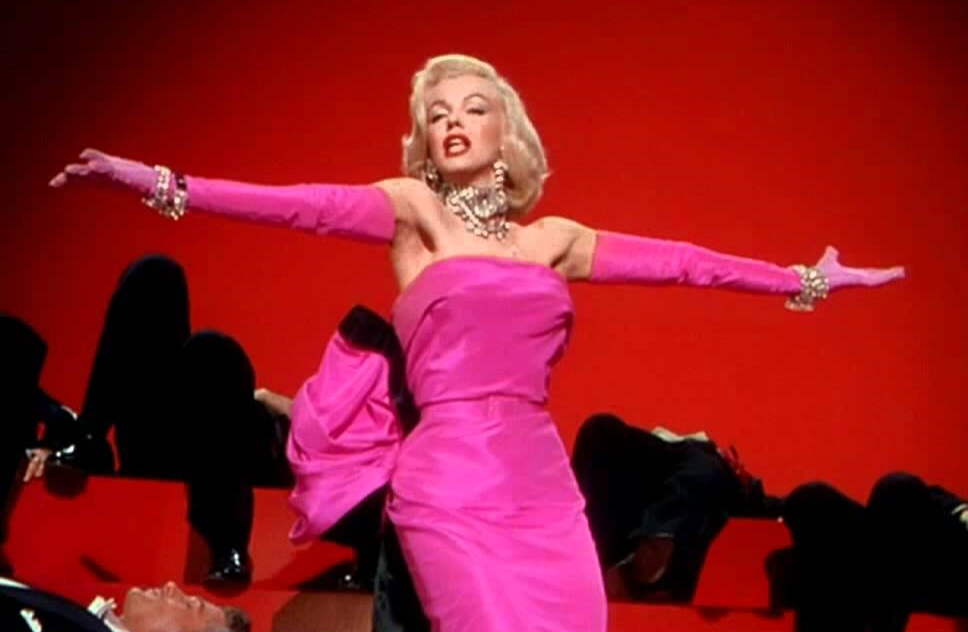Every year of my Oxford degree so far I’ve optimistically bought a ticket to the Pink Night fundraiser, and every year I’ve arrived at the same quandary a few weeks later: what to wear. I know it isn’t particularly sustainable to be buying new pink outfits every year with little repeat wear potential, even if they’re thrifted, but I am occasionally too weak to resist the promise of a fresh Instagram post, and so I have become well-acquainted with the pitfalls of wearing pink. Every possible shade of the colour seems to come with its own potential issues — pastel can feel a bit fairy princess, or worse, bridesmaid, coral makes it seem like you didn’t think you could pull off a ‘proper’ pink, and Schiaparelli-esque fuchsia is such a domineering shade that it threatens to wear you rather than you wearing it.
I also think that part of the reason why pink can be such a difficult colour to wear is found in its diverse usage in popular culture. Much has been made of the mid-20th century shift from pink as a ‘boy colour’ to a ‘girl colour’, through landmark hyperfeminine iterations of the colour worn by Mamie Eisenhower on Inauguration Day 1953 and Marilyn Monroe in Gentlemen Prefer Blondes, but less is made of how pink was now the definitive colour not just for girls, but for every type of girl. No other colour has had quite such a range of iconic female characters in film clad in it. While white and black-based looks still adhered to the Madonna-Whore dichotomy, pink was the definitive colour for every section of the spectrum of female archetypes from toxic feminine mean girl icons like the Pink Ladies and Regina George, to Molly Ringwald’s ingenues, to genuine role models like Elle Woods. In the words of the Lebanese designers Azzi & Osta, pink “represents the softer or the wilder side of a…woman”.
Yet this universal palette of pinks provided to women across the board has inspired some reactionary approaches to the colour. The mid-2010s were the age of ‘millennial pink’ as the subject of derisive Guardian articles, and pastel manicures clasping rose gold iPhones, and more than ever before pink was associated with a particularly delicate brand of femininity. At the same time, to a certain group of people born between 1999 and 2003, a certain shade of pink brings flashbacks to Tumblrs filled with sunsets and bubblegum pink cigarette lighters overlaid with Lana Del Rey lyrics or questionable takes on mental health — here, suddenly, was pink gone grunge. The point is, people wanted pink femininity but without any hangups about being bad feminists, and the result was an aesthetic that seemed more regressive than any cinematic rich bitch’s go-to pink blazer. By the time Jodie Comer’s Villanelle made her debut in pink tulle in 2018, and stars from Gemma Chan to Dakota Johnson took cues from her at the Oscars the following year, the idea of an edgy, ‘not like other girls’ girl in head-to-toe pink felt a bit passé.
So where next for pink? Who What Wear forecasts a step away from millennial pink and soft pastels, and towards hot pink, via Zendaya power suits and ubiquitous Jacquemus bags. However, just as paler pinks bring to mind troubling questions about our femininity and how we express it, brighter pinks can tread a fine line between feminine power and caricature. As long as pink has its cultural and political baggage, there will be few colours through which one can express oneself in a wider variety of ways. With the problematic versatility of pink uppermost in our minds, let the annual Pink Night outfit search commence.
Image Credit: Gentlemen Prefer Blondes Trailer



